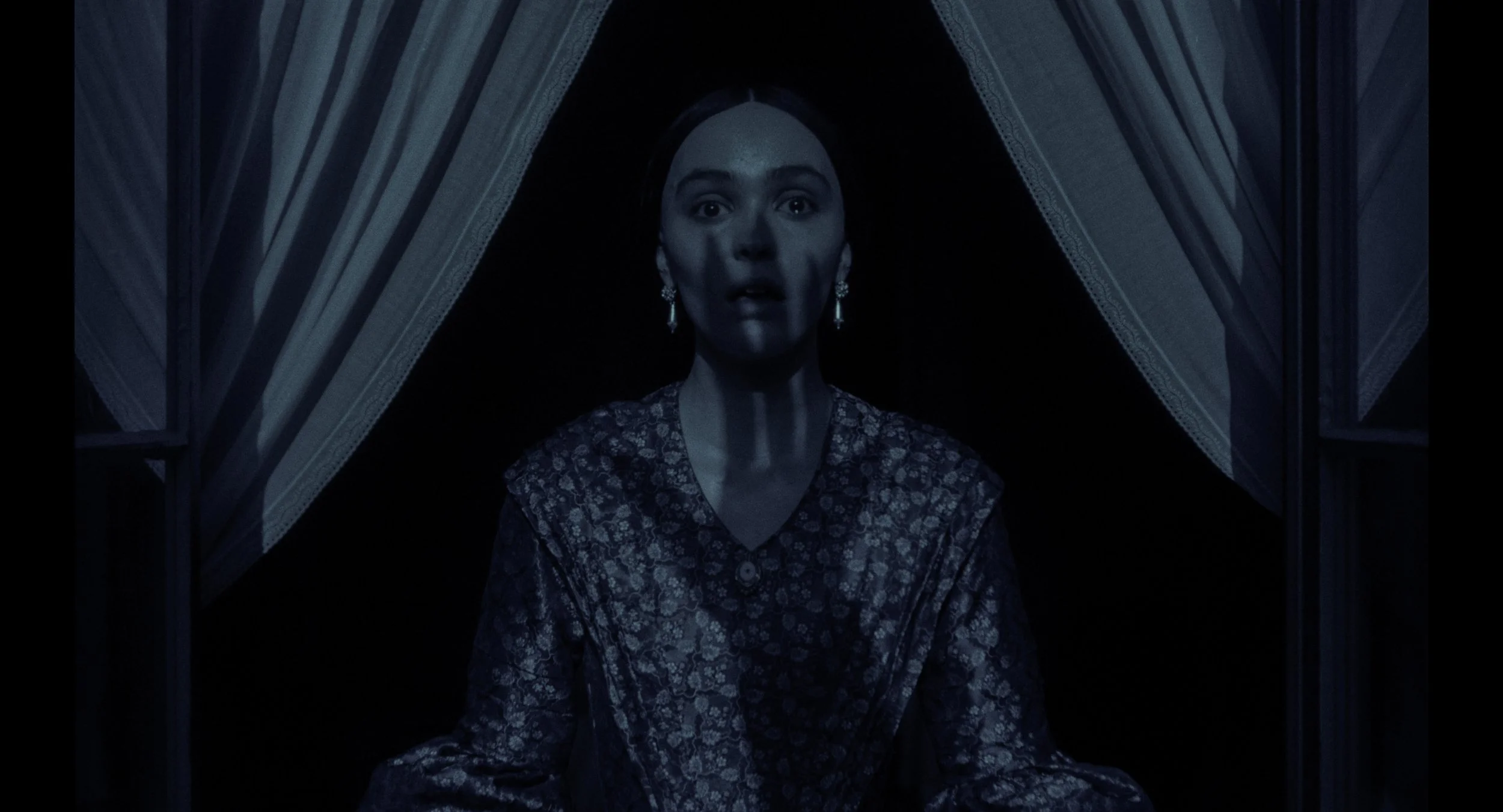Nosferatu | 2024
Lily-Rose Depp in NOSFERATU. Courtesy of Focus Features.
Yet another retelling of the Dracula story might seem like unusual Christmas Day programming, but Robert Eggers' Nosferatu, with its wintry setting and gothic trappings, might just be a perfect holiday treat for horror fans.
A remake of F.W. Murnau's 1922 silent classic Nosferatu is a tall order, and it's telling that only one other filmmaker has tried it - none other than Werner Herzog in 1979. The issue, of course, is that Murnau's Nosferatuwas just an unauthorized adaptation of Bram Stoker's "Dracula," which led Stoker's widow to file (and win) a lawsuit against the film's German producers that ordered all copies of the film to be destroyed. She was thankfully unsuccessful in her aims, and the film survives to this day as one of the most iconic works of the silent era.
Yet despite its title and some changed names, Nosferatu is Dracula. It's the tale of a Transylvanian vampire named Count Orlock (Bill Skarsgård) who uses a real estate deal with a naïve young broker named Thomas (Nicholas Hoult) to buy an ancient castle in Germany and then proceeds to fixate on the young man's wife, Ellen (Lily-Rose Depp). Now able to move more freely in a less superstitious land, Orlock proceeds to prey on Thomas' friends and family, sewing discord and madness with the help of a deranged follower. At the same time, Thomas seeks to destroy him with the help of occult researcher Professor von Franz (Willem Dafoe).
It's an oft-told tale, but Eggers' passion for the material shines through. Sure, it's Dracula, and not even a particularly unique take on Dracula. However, the filmmaker behind films such as The Witch and The Lighthouse still manages to justify another visit to this familiar well. This is not Murnau's film - Eggers' Nosferatu doesn't have the same visual acumen as the evocative 1922 film, whose expressionistic use of light and shadow is now the stuff of legend. That film came from a time when the cinematic language was still being developed, leading to filmmakers engaging in greater experimentation and risk-taking. Eggers has certainly made more stylistically bold films than this one. But there's something so intoxicating about its Victorian-era trappings, all gas-lit cobblestone streets and fog-shrouded landscapes. It feels constantly sinister, an air of classically designed foreboding hanging over every frame. It's the kind of lavish production not often afforded to the horror genre, and Eggers makes the most of it.
Yet perhaps the film's most indelible creation is Orlock himself. Having played Pennywise the Clown in It parts 1 and 2, Bill Skarsgård is no stranger to creating monsters, but his Count Orlock is a wholly unique creation that feels like nothing we've ever seen before. He's monstrous, grotesque, and yet a surprisingly sexual being. His guttural Slavic accent is deeply unsettling but also strangely alluring: dangerous, unnerving, and intriguing. Eggers explores the sexual draw of vampires and the sensual nature of their myth. The act of draining one's blood, one's essence, in a sense, is a deeply intimate act, and the yearning for that coupling becomes the film's central focus. In that regard, Nosferatu is a surprisingly romantic film. While Eggers certainly doesn't shy away from the horrific elements of the tale, Nosferatu is, at its heart, a tale of yearning and desire, of a deep-seated longing for forbidden fruit, with Orlock as the fearsome serpent and Ellen his haunted Eve.
It may not be Murnau (what is, these days?), but Eggers' combination of Jane Eyre aesthetics with the dark lure of the macabre proves to be a winning concoction, a Christmas tale of virtue and vice that may prove to be the perfect antidote for those who are weary of holiday cheer.
